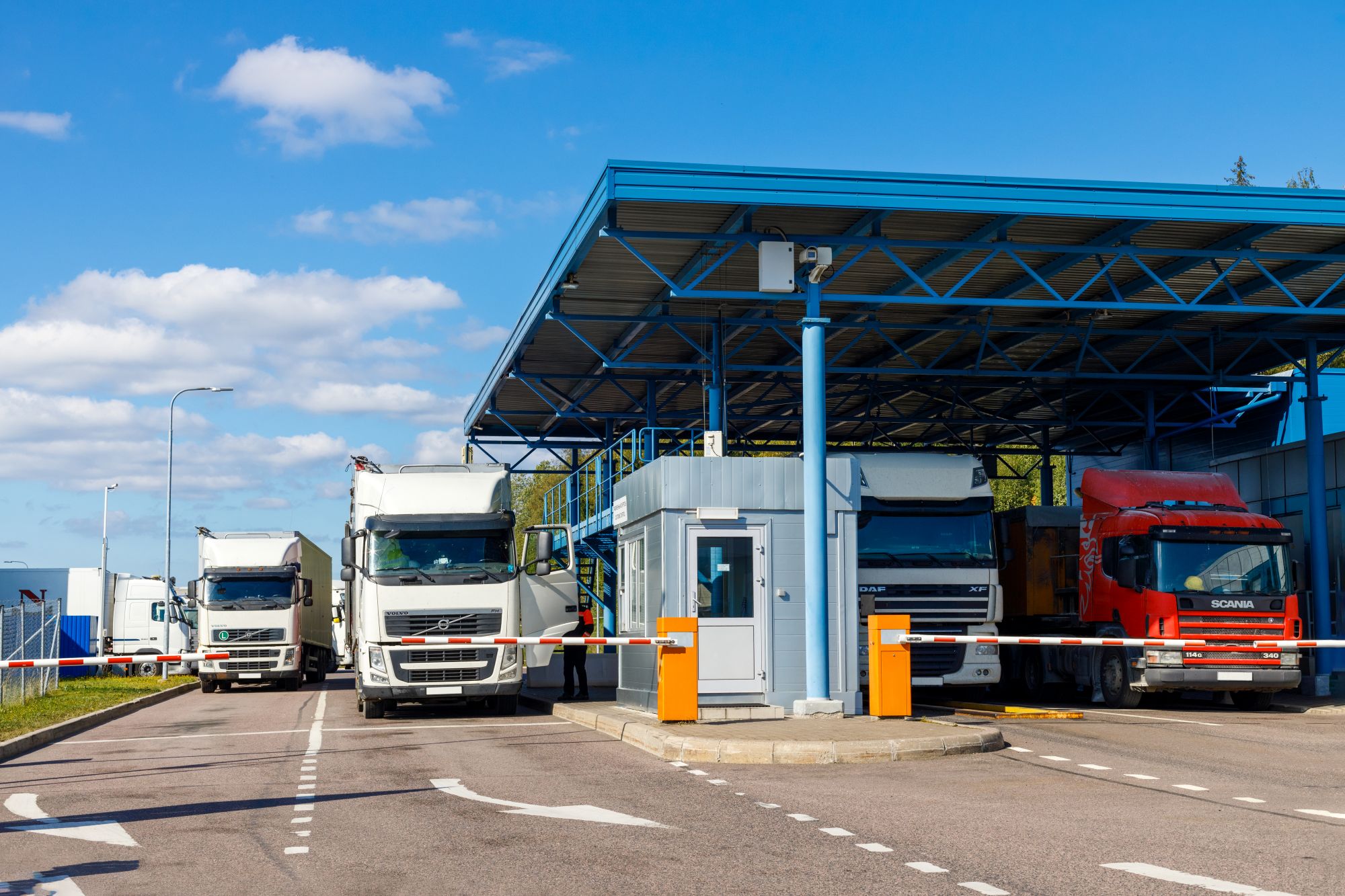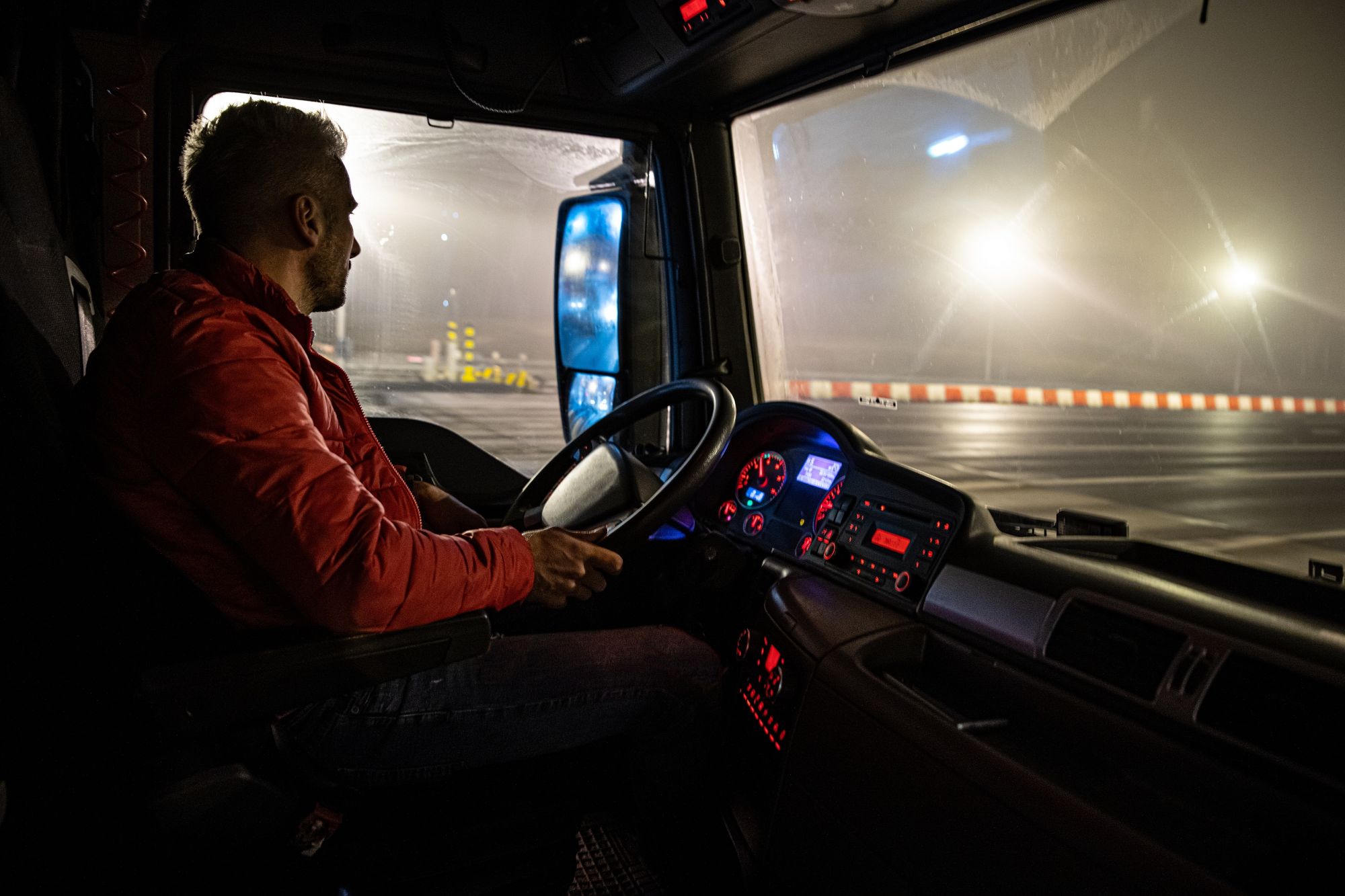
Guest
Réouverture de la frontière entre la Pologne et l'Ukraine : Ce que les opérateurs de flotte doivent savoir
Créée: 18/06/2025
•
Mise à jour : 20/06/2025
Après des mois de perturbations, le trafic de marchandises entre la Pologne et l'Ukraine circule à nouveau librement. Mais avec des tensions qui couvent toujours et la menace de nouveaux blocages dans tous les esprits, les opérateurs de flotte doivent rester attentifs aux risques - et prêts à protéger le bien-être des conducteurs de part et d'autre de la frontière.
Cet article explique les causes de la perturbation, son impact sur les conducteurs et les mesures que vous pouvez prendre pour réduire l'impact d'une éventuelle reprise des actions syndicales.
Quelle est la cause du blocage de la frontière entre la Pologne et l'Ukraine en 2024 ?
La situation a commencé à la fin de l'année 2023 lorsque les chauffeurs de camions polonais ont commencé à protester aux principaux postes-frontières. Ils affirmaient que la décision de l'UE de lever les exigences en matière de permis pour les transporteurs ukrainiens - introduite comme mesure temporaire en temps de guerre - avait conduit à un afflux d'opérateurs à bas prix, au détriment des entreprises polonaises.
Les manifestations se sont intensifiées, bloquant les principales voies d'acheminement des marchandises vers l'Ukraine et piégeant des milliers de véhicules dans des files d'attente s'étendant sur des kilomètres. À son apogée, le blocus a laissé [plus de 5 000 camions bloqués] (https://www.npr.org/2024/01/07/1223065019/20-mile-backup-as-polish-truckers-blockade-border-in-standoff-with-ukrainian-dri) à la frontière, certains attendant plus d'une semaine pour passer. Les conducteurs européens non ukrainiens ont eux aussi souffert de longs retards, d'horaires surchargés et de mauvaises conditions.
Ce qui a commencé comme un conflit logistique s'est transformé en une protestation plus large des camionneurs polonais sur les importations ukrainiennes, l'accès au marché et l'impact des mesures d'urgence de l'UE en matière de transport. Les agriculteurs polonais se sont rapidement joints au mouvement, frustrés par l'effet des produits agricoles ukrainiens sur les prix intérieurs.
Les conducteurs polonais ont également [critiqué le système de file d'attente électronique] (https://www.pravda.com.ua/eng/news/2023/11/29/7430863/) de l'Ukraine pour les passages frontaliers - connu sous le nom d'eCherha - en arguant qu'il désavantageait les transporteurs de l'UE. Alors que le système a été conçu pour rationaliser le mouvement du fret en permettant aux transporteurs de réserver à l'avance des créneaux de passage, les opérateurs polonais ont affirmé qu'il donnait aux entreprises ukrainiennes une plus grande flexibilité et un accès plus rapide. Des problèmes tels que les barrières linguistiques, l'intégration limitée dans les systèmes logistiques de l'UE et une mise en œuvre incohérente ont fait que de nombreux chauffeurs européens ont attendu plus longtemps à la frontière, ce qui a alimenté le sentiment d'un traitement inéquitable et a contribué à l'agitation générale.
Chronologie des blocages de la frontière entre la Pologne et l'Ukraine
Novembre 2023:Les protestations commencent aux points de passage de Dorohusk, Hrebenne et Korczowa.
Décembre 2023: D'autres points de passage sont bloqués, notamment celui de Medyka ; trois conducteurs ukrainiens meurent dans les files d'attente.
Janvier 2024: Le gouvernement polonais accepte de suspendre le blocus jusqu'en mars.
Mars-avril 2024: Les blocages sporadiques reprennent aux petits points de passage.
Mai 2025: Un nouveau blocus de quatre mois commence à Yahodyn-Dorohusk, mais il est annulé par le tribunal.
Juin 2025: Tous les principaux postes-frontières restent ouverts, mais le risque de perturbations futures demeure.
Que fait le gouvernement polonais pour améliorer la situation ?
En réponse à la perturbation et à ses implications plus larges, le gouvernement polonais a adopté une position proactive. Les points de passage frontaliers avec l'Ukraine ont été désignés comme infrastructures critiques, ce qui leur confère une plus grande protection contre les blocages futurs et contribue à assurer la continuité du flux de marchandises, de l'aide humanitaire et du soutien militaire.
Un nouveau Conseil de coopération avec l'Ukraine a également été créé pour renforcer les liens entre les deux pays. Il a notamment pour mission d'améliorer la coordination en matière de commerce et de transport. Parallèlement, la Pologne investit dans les infrastructures de la frontière orientale et s'engage auprès des responsables de l'UE pour obtenir des conditions plus équitables pour les transporteurs polonais. Même si ces mesures ne résoudront pas la situation du jour au lendemain, elles témoignent d'un engagement à long terme en faveur de la stabilité et d'un dialogue structuré.

L'impact sur les conducteurs
Le blocus a créé des conditions inacceptables pour les chauffeurs professionnels. Nombre d'entre eux ont passé des jours, voire des semaines, dans leur taxi, sans accès aux toilettes, à la nourriture ou à l'eau courante. Certains sont restés bloqués par des températures glaciales, sans chauffage ni abri.
[Trois chauffeurs ukrainiens sont morts (https://www.reuters.com/world/europe/third-ukrainian-truck-driver-dies-poland-border-blockades-tv-2023-12-16/) pendant la période du blocus, l'épuisement et des conditions médicales non traitées étant considérés comme des facteurs contributifs.
Ces perturbations ont également entraîné une charge mentale et émotionnelle importante, en particulier pour les conducteurs ukrainiens qui tentaient de rejoindre leur domicile ou d'en revenir en temps de guerre. Les retards ont affecté non seulement le commerce, mais aussi l'acheminement du carburant, de l'aide et des biens militaires essentiels à la défense nationale de l'Ukraine.
Alors que les manifestants polonais ont insisté sur le fait que les véhicules d'aide humanitaire et militaire étaient autorisés à franchir la frontière, [les rapports des autorités ukrainiennes] (https://www.reuters.com/world/europe/around-3000-trucks-stuck-ukrainian-border-due-polish-drivers-blockade-2023-11-19/) indiquent que cela n'a pas toujours été le cas.
Ces conditions n'ont pas seulement été traumatisantes pour les conducteurs, elles ont également révélé des lacunes dans la gestion des risques et les plans d'urgence des flottes. Les opérateurs doivent désormais considérer les perturbations aux frontières comme une menace permanente.
Ce que les opérateurs de flotte doivent savoir
Bien que la situation se soit stabilisée, les tensions sous-jacentes entre les transporteurs polonais, les opérateurs ukrainiens et la politique de l'UE ne sont toujours pas résolues. Les gestionnaires de flotte opérant dans ou à proximité de la région doivent être attentifs à la possibilité de nouvelles actions syndicales, en particulier lors des points de pression saisonniers ou des révisions de la politique de l'UE.
Voici les recommandations de l'équipe SNAP pour gérer efficacement la situation :
1. Suivre la situation à la frontière polono-ukrainienne
Tenez-vous au courant des nouvelles provenant d'associations logistiques polonaises et ukrainiennes et de sources gouvernementales. Abonnez-vous aux alertes sur le trafic frontalier et suivez les partenaires logistiques de confiance pour obtenir des mises à jour en temps réel.
2. Prévoir des itinéraires flexibles
Prévoir des plans d'urgence pour rediriger les véhicules vers la Hongrie, la Slovaquie ou la Roumanie si les points de passage entre la Pologne et l'Ukraine sont à nouveau bloqués.
3. Favoriser le bien-être des conducteurs
Veillez à ce que vos camions soient approvisionnés en produits de première nécessité : nourriture, eau, blocs d'alimentation et trousses médicales.
Pendant les périodes de troubles, l'accès à des parkings sécurisés pour camions en Pologne est essentiel, afin que vos conducteurs soient en sécurité, reposés et à l'écart de la route. Fournissez à vos chauffeurs des informations actualisées sur les parkings sécurisés pour camions et les aires de repos le long de leur itinéraire.
Notre [application intruck] (https://intruckapp.com/) propose une carte interactive des parkings pour camions, avec 11 000 prestataires de services pour poids lourds dans toute l'Europe, y compris en Pologne, en Hongrie et en Slovaquie. C'est un outil facile à utiliser pour trouver des aires de repos sécurisées pour les camions en Pologne, ce qui le rend particulièrement utile pendant les périodes d'action industrielle.
Bien que l'application ne propose pas actuellement de parking pour camions réservable en Ukraine, les opérateurs et les conducteurs ukrainiens peuvent utiliser intruck pour localiser des aires de repos fiables au sein de l'UE pendant les trajets longue distance ou les périodes de perturbation.
4. Réservez des solutions de stationnement sécurisé pour camions en Pologne
En raison de la demande accrue pendant les périodes de perturbation, il est essentiel de réserver à l'avance. Les conducteurs peuvent également utiliser intruck pour trouver et réserver à l'avance des parkings pour camions de confiance en Pologne. Que vos véhicules se rendent en Europe de l'Est ou retournent vers l'ouest, cela permet à vos chauffeurs d'accéder à des parkings pour camions près de Varsovie et d'autres zones très fréquentées.
5. Communiquer régulièrement avec les conducteurs
Établir des horaires d'enregistrement, en particulier si l'on s'attend à de longues attentes ou à des déviations. Rassurez les conducteurs en leur disant que leur bien-être est une priorité et apportez-leur votre soutien s'ils sont confrontés à des retards inattendus. Si possible, proposez à l'avance des lieux de stationnement sécurisés pour les camions en Ukraine, afin qu'ils sachent où faire une pause.
Perspectives d'avenir
La réouverture de la frontière entre la Pologne et l'Ukraine est une bonne nouvelle pour les flottes opérant en Europe de l'Est. Mais les tensions politiques n'étant pas résolues, il est essentiel de se tenir prêt.
"La situation évolue rapidement", déclare Nick Renton, responsable de la stratégie européenne et du développement commercial chez SNAP. "Avec la possibilité de nouvelles perturbations à la frontière entre la Pologne et l'Ukraine, nous recommandons aux opérateurs de flottes de mettre en place des plans solides pour donner la priorité au bien-être des conducteurs et minimiser les risques opérationnels. Il s'agit notamment d'introduire de la flexibilité dans les calendriers de livraison, de prévoir des fournitures essentielles dans les véhicules et de veiller à ce que les conducteurs aient accès à un parking sécurisé pour les camions.
"Notre réseau de relais routiers réservables à travers l'Europe et la Pologne vous donne les outils pour rester agile - offrant une tranquillité d'esprit à la fois aux opérateurs et aux conducteurs lorsque les conditions sur le terrain deviennent imprévisibles."
Consultez notre carte interactive de [parking sécurisé pour camions en Pologne aujourd'hui] (https://snapacc.com/map/poland).



